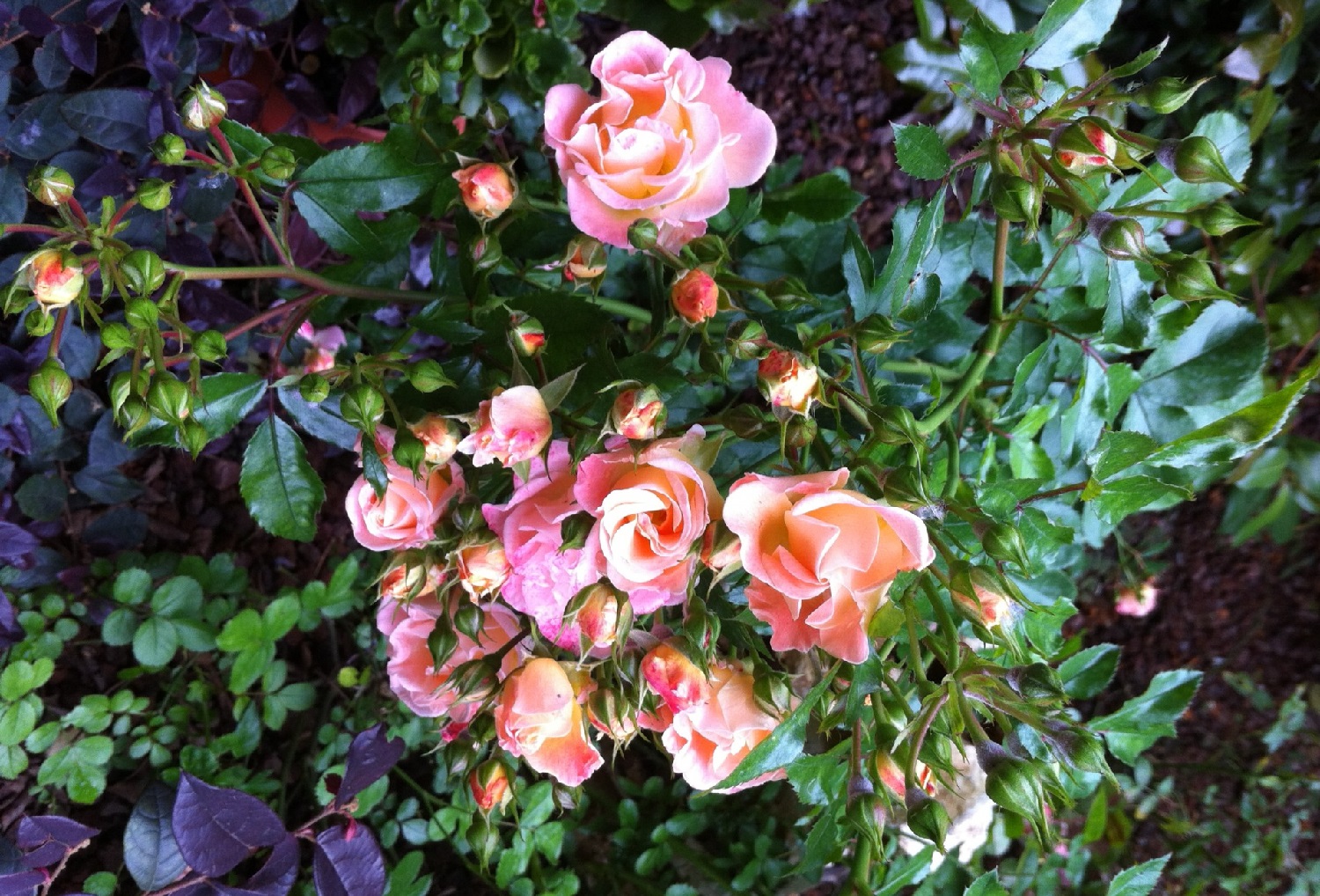
Coffee grounds are frequently recommended as a fantastic way to use a waste product to easily and inexpensively nourish your soil. Add coffee grinds to compost or around roses. Although adding coffee grounds to your rose garden has some advantages, there are also some disadvantages that you should be aware of.
When used in moderation, coffee grinds can be very beneficial to rose plants, but use them sparingly. Because coffee grounds contain a large amount of nitrogen, fertilizing the area around your roses with them can cause root burn.
Continue reading to learn more about the advantages of coffee grounds for the soil, how to apply them effectively, and most crucially, WHEN to do so.
(Read on for additional information; do not apply too early or too late in certain seasons as this can stimulate new growth that will be killed by the first frost of winter.)
Table of Contents
How Coffee Grounds Benefit Roses
Nitrogen is the main nutrient in coffee grounds that is readily available. Nitrogen (together with phosphate and potash) is the most critical nutrient for healthy roses in the growing season and it is required in significant levels as it stimulates new leaf, stem and cane growth.
When applied in the spring for new growth at the start of the growing season and to ensure a more healthy, disease-resistant rose, coffee grounds are a welcome and much-needed injection of nitrogen.
Coffee grounds contain other important elements including phosphorus, potassium, and copper, all of which will increase the health of the soil and are key nutrients for roses. However, rose growers primarily prefer coffee grounds for their higher nitrogen concentration.
Improves Soil Drainage and Feeds the Soil’s Ecosystem
Roses also like the addition of organic matter to the soil (such as coffee grounds and leaf mulch), which helps to enhance soil structure and feed soil organisms like earthworms and microorganisms that break down organic matter into a form that is readily absorbed by rose roots.
Roses require well-draining soil that can also retain water so the roots can draw upon the water in the surrounding moist soil when the need arises without the root system becoming saturated. Organic material has the capacity to absorb and hold onto water while allowing excess water to drain freely through the soil.
Organic material offers the ideal compromise between retaining moisture and allowing extra water to drain away, preventing the roots from becoming waterlogged.
Additionally, your neighborhood worm population enjoys eating coffee grounds. Worms effectively aerate compact soil, improving the soil structure and drainage, which will be advantageous to the roses.
Because worms produce channels in the soil, areas with high worm activity actually drain 10 times more quickly than areas with low worm activity, which will assist your rose avoid root rot if you have compacted heavy soil or slow drainage.
Worms consume coffee grounds, and the worm casts they produce concentrate the vital nutrients and minerals, increasing the amount of soil nutrients that are available to the roots of your rose.
Your roses’ roots may delve deeper into the soil thanks to the tunnels and casts that the worms leave behind, increasing the plant’s stability and providing it with access to moisture and nutrients for a healthier and more drought-resistant rose.
Coffee grinds are also beneficial for adding to your compost heap as it decomposes quickly and it can contribute valuable fertile material to be used as mulch for your roses and other plants in your garden throughout the growing season.
Ensures the Right Soil Acidity
The ideal pH for growing roses is 6.5, with a range of pH 6 to 6.8 also being effective. Although the acidity of leftover coffee grounds varies depending on the type of bean used, they are typically pH neutral to slightly acidic after destroyed, making them ideal for fertilizing roses.
If you are unclear of your soil’s pH, you can get a pH soil tester from Amazon to check sure it is within the recommended range.
When to Apply Coffee Grounds (Important!)

Wait until the rose emerges from its winter slumber and the fresh leaves are nearly completely opened in April or May before applying coffee grounds. After August 15th, coffee grounds shouldn’t be sprinkled on rose beds since new growth requires time to harden and get ready for the chilly winter weather.
Any nitrogen-based fertilizer you do use after the middle of August will probably cause the new growth to turn black and perish in the first frost. If this occurs, you should use pruners as quickly as possible to remove the damaged growth. The majority of rose species are hardy plants, so as long as you react quickly, the rose should be alright.
How to Apply Coffee Grounds as a Fertiliser for Roses (Don’t use too Much)
You may use coffee grinds to benefit your roses in a number of efficient ways. However, you should only use a small amount of coffee grounds while fertilizing flowers. Nitrogen is extremely concentrated in coffee grounds.
However, too much nitrogen can actually burn the roots of roses and other plants. Nitrogen is essential for healthy soil and plants.
There are three simple ways to securely use coffee grounds on roses.
- Each adult rose plant should have half a pound of coffee grinds scattered around it. Add two liters of water and water (a whole watering can).
You can raise the nitrogen content of the soil around rose plants by adding around half a pound (2 cups or 500 grams) of fertilizer without endangering the roots. It is preferable to water in rather than dig the grounds into the soil since this could disrupt the roots and surrounding soil structure.
Additionally, because worms love coffee grounds, they will draw the grounds down and work them into the soil for you, saving you the time and effort. Worm casts are produced as the coffee grounds are broken down and are in a form that the plant may more easily absorb.
Strong worm activity in rose beds is a sign of healthy soil and ideal rose-growing conditions.
At the beginning of the growth season (late April/early May), you only need to do this once. When you fertilize your soil too late in the season, your rose plant will produce new, delicate leaf growth that will be damaged by the first winter frost.
This amount of coffee grounds will deliver the proper level of nitrogen without having any negative side effects.
Another strategy is…
2. In a 2 gallon (9 litre) water can, combine half a pound of coffee grinds.
To water the surrounding soil of each of your roses after adding about half a pound (2 cups or 500 grams) of coffee grounds to a watering can (typical watering cans have a 2 gallon capacity). This helps to ensure that nutrients are distributed evenly throughout the soil and spares you from having to water it again.
Pour the water into the watering can after adding the coffee grounds. This will aid in distributing the water throughout the mixture and suspending the finely ground coffee.
Coffee grounds and water are combined to create an excellent fertilizer that encourages the solution’s efficient root-to-soil penetration.
In order to avoid encouraging late-season development, which would be irreparably harmed by the first frost of winter, it is crucial to do this in the beginning of the growing season rather than near the end of summer.
Don’t mix more than half a pound’s worth of coffee grounds into each of the two gallons (9 litres) of water around each plant. This is another useful guideline to follow to make sure your roses get the appropriate balance of nutrients without experiencing the negative effects of too much nitrogen.
3. To balance the nitrogen and carbon content of your mulch, add coffee grounds to your compost pile.
Your compost will contain the right proportion of nitrogen and carbon if coffee grounds are added.
Applying a layer of compost around roses will limit weed\sgrowth, enhance the structure of the soil and increase drainage.
Additionally, organic mulch, like coffee grounds, is excellent at absorbing water, allowing your rose’s roots to draw on the reserve moisture when necessary.
The optimum time to apply compost mulch around your roses is at the beginning of spring because this is when weed growth and competition for resources with roses are at their highest. There is no need to dig the mulch into the soil since this could injure the roots and interfere with the existing soil ecology and structure.
Instead, spread the mulch 1-2 inches deep around the roses and allow rainwater and worms work the nutrients into the soil. To ensure that the rose’s stem doesn’t rot, don’t pile mulch close to it; instead, leave an inch of space around the stem free of mulch.
Where to Source Coffee
Grounds

The majority of local retailers cheerfully give out leftover coffee grounds for free because they would otherwise have an excess of the waste product and it saves them from having to dispose of it themselves.
However, established businesses frequently have clear procedures for how to deal with trash, so they may be less eager to pass over their grounds. You can also try asking at larger coffee companies like Starbucks.
Often these coffee companies are franchises with independent management therefore their attitude on giving out coffee grounds can differ from store to store.
Conclusion
In order for roses to flourish and produce an impressive flower display, soils must be improved in terms of fertility, drainage, and structure.
The instructions should be followed to prevent burning the roots, so use caution as coffee grounds can contain a lot of nitrogen. Distribute the grounds to your rose bed only once in the spring.
When roses are eager to put on new growth in the spring, they require a lot of nitrogen, one of the three important elements (the others being phosphate and potash). Thus, by adding coffee grounds to your rose bed at the beginning of the season, while your rose’s leaves are just beginning to emerge, you will prepare your rose to thrive all year long with a good show of flowers.
